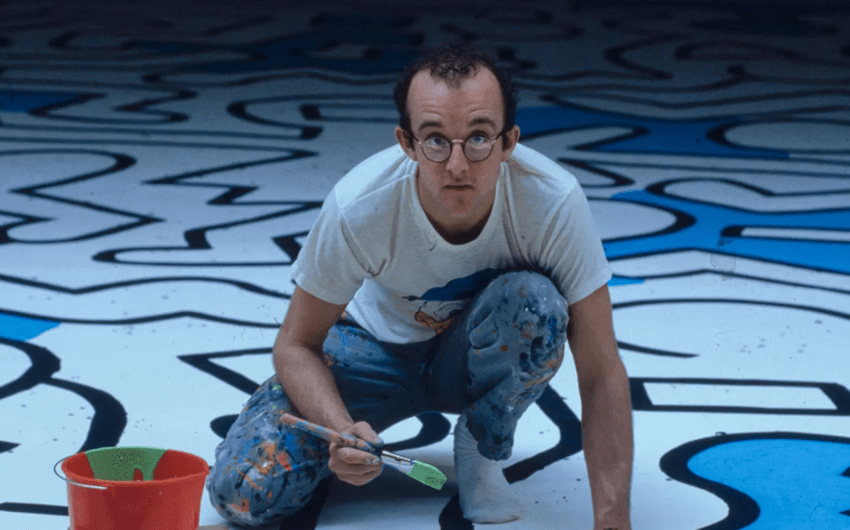Keith Haring’s Net Worth and the Lasting Financial Legacy of the Iconic Pop Artist
Keith Haring is one of the most recognizable and influential pop artists in modern history. His bold lines, radiant babies, barking dogs, and electric figures reshaped visual culture across the 1980s. But beyond the art world, people often ask: “What was Keith Haring’s net worth?” While he passed away young, his financial legacy continues to grow decades later. Understanding his net worth requires exploring his life, career, artwork, philanthropy, and the global impact that transformed his creations into timeless cultural symbols.
Who Was Keith Haring?
Keith Haring was an American artist and social activist born in 1958 in Reading, Pennsylvania. Known for his distinct graffiti-inspired style, Haring rose to fame in New York City’s downtown art scene during the early 1980s. He began drawing with chalk in subway stations, creating quick, kinetic images that captured people’s attention instantly. What began as an underground visual language quickly exploded into a worldwide phenomenon.
Haring’s work bridged high art and street culture, making his imagery accessible to every demographic. His art appeared everywhere—galleries, public murals, album covers, activist posters, T-shirts, and even children’s books. He used his creativity not just for artistic expression but for social messaging, supporting anti-apartheid efforts, AIDS awareness, LGBTQ+ advocacy, and children’s causes.
Keith Haring’s Net Worth at the Time of His Death
When Keith Haring passed away in 1990 at just 31 years old, his estimated net worth was around $40 million. This number reflects the value of his artwork, his commercial projects, and the intellectual property he left behind. However, estimating his net worth is more complex than simply looking at dollars earned during his lifetime. Much of his wealth was intentionally transferred into the Keith Haring Foundation, a nonprofit he established in 1989 to protect his work and support charitable causes.
Haring knew he was approaching the final years of his life after his AIDS diagnosis. In response, he made legal and financial arrangements that prioritized philanthropy and legacy over personal accumulation. As a result, much of his estate was structured to ensure ongoing support for children’s charities, AIDS organizations, and the preservation of his art.
The Keith Haring Foundation: Steward of His Legacy
Any discussion of Haring’s net worth must include the role of the Keith Haring Foundation. The foundation manages the licensing, reproduction rights, and sale of Haring’s artwork. It also donates profits to various nonprofit organizations that align with the artist’s values.
The foundation’s responsibilities include:
- Maintaining and authenticating Keith Haring’s artwork
- Licensing his images for media, merchandise, exhibitions, and public installations
- Supporting ongoing philanthropic efforts
- Preserving Haring’s cultural significance for future generations
Because the foundation owns his intellectual property, it continues to generate income long after his death. That means Haring’s “effective net worth”—in terms of economic impact and estate value—has dramatically increased since 1990, even though the profits are reinvested into charitable causes rather than his personal estate.
How Much Is the Haring Estate Worth Today?
While exact modern valuations are not publicly disclosed, experts estimate that the total economic value of Keith Haring’s intellectual property, licensing agreements, and estate holdings is now well over $100 million. Some estimates place the value even higher when factoring in:
- Continued demand for original Haring artworks (often selling for millions)
- Massive global licensing deals
- Increasing value of late-20th-century contemporary art
- Permanent public installations in major cities worldwide
Even though Haring himself did not financially “benefit” from this posthumous growth, the economic value of his work continues to rise, strengthening the charitable foundation he created.
How Keith Haring Made His Money
Keith Haring’s financial success came from multiple simultaneous revenue streams—rare for an artist at the time and groundbreaking within the art world.
1. Gallery Sales
Haring’s paintings, sculptures, and installations sold rapidly once he gained recognition in the early 1980s. His work appeared in prestigious galleries across New York, Europe, and Asia. Collectors, museums, and institutions quickly recognized his originality and cultural significance.
2. Public Murals
Haring painted dozens of large-scale murals, often for free or at community rates, but some commissions generated significant income. His murals became landmarks in cities like New York, Paris, Berlin, Philadelphia, and Amsterdam.
3. The Pop Shop
One of Haring’s most revolutionary business ventures was the opening of the Pop Shop in 1986. Located in downtown Manhattan, the shop sold affordable merchandise featuring Haring’s designs—T-shirts, buttons, posters, and toys.
Haring launched the Pop Shop to democratize art. He believed art should be accessible to everyone, not just collectors with deep pockets. Although controversial in the fine-art world at the time, the Pop Shop became a model for modern commercial art branding.
4. Licensing and Collaborations
Haring collaborated with major brands, musicians, and designers, including:
- Swatch watches
- Absolut Vodka
- Record albums and stage designs
- Fashion houses
These partnerships built enormous brand recognition and created sustainable revenue streams.
5. Philanthropic Partnerships
Haring frequently donated artwork for auctions that benefited AIDS research, children’s programs, and social justice organizations. While not revenue-generating for him personally, these donations increased his public visibility and cultural influence.
Why Keith Haring’s Artwork Is So Valuable Today
Haring’s art continues to increase in value for several reasons:
- His early death created scarcity in the market.
- His imagery became iconic worldwide, recognizable across cultures and generations.
- He played a central role in 1980s New York street art culture alongside Basquiat and Warhol.
- His social activism adds historical importance to his artwork.
- Modern exhibitions and retrospectives continue to elevate his legacy.
Today, original Haring paintings often sell for millions at major auction houses. Even smaller drawings, prints, and sculptures command high prices, making his body of work one of the most valuable of the late 20th century.
How Haring’s Legacy Continues to Generate Wealth—and Good
Unlike many artists whose estates simply profit from posthumous success, Keith Haring intentionally built his financial legacy around charity. His foundation continues to distribute money to:
- AIDS research organizations
- LGBTQ+ advocacy groups
- Children’s programs
- Arts education initiatives
Every licensing deal or art sale connected to his estate supports causes he cared deeply about. In this way, his net worth is not just a financial measure—it is a tool for ongoing social impact.
The Final Answer: Keith Haring’s Net Worth
Keith Haring’s estimated net worth at the time of his death was around $40 million.
Since then, the value of his estate, intellectual property, and global licensing has grown tremendously. Modern estimates place the full economic scope of his legacy at well over $100 million, though this wealth is held and managed by the Keith Haring Foundation rather than personal heirs.
Keith Haring’s story is one of creativity, activism, and intentional legacy-building. His work continues to thrive across galleries, streets, fashion, and pop culture—ensuring that his financial and cultural impact remains powerful more than three decades after his passing.
image source: https://www.britannica.com/biography/Keith-Haring






